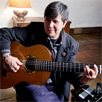Indian Mascot, 1959
Now begins the festival and rivalry of late fall,
the weird debauch and daring debacle
of frat-boy parties as students parade foggy streets in mock
processions, bearing on shoulders scrawny effigies of dead
defeated Indians cut from trees, where,
in the twilight, they had earlier been hung.
“Just dummies,” laughs our dad, “Red Indians hung
or burned—it’s only in jest.” Every fall
brings the Big Game against Stanford, where
young scholars let off steam before the debacle
they may face of failed exams. “You’re dead
wrong,” he says to Mom, “They don’t mock
real, live Indians.” Around U.C. campus mock
lynchings go on. Beneath porches we see hung
the scarecrow Natives with fake long braids, dead
from the merry-making. On Bancroft Way one has fallen
indecorously to a lawn, a symbol of the debacle
that happened three generations ago in California’s hills, where
Native peoples were strung up. (A way of having fun? Where
did they go, those Indian ghosts?) “Their kids perform mock
war dances, whooping, re-enacting scenes of a debacle
white folks let loose,” chides Mom. “Meanwhile we hang
portraits of Presidents on school walls and never let fall
the old red, white, and blue. My dear brother is dead
because he fought in a white man’s war. How many dead
Indians do they need to feel okay? This whole thing wears
on my soul.” In the dark car we go silent, and the fall
night gets chillier. In yards, blazing bonfires mock
the stars that glow palely somewhere above. A thin moon hangs
over the tule fogs. I’ve never heard the word “debacle”
before and wonder what it means. “What’s a debacle,
Mom?” I ask. “Oh, honey, it’s a terrible and deadly
collapse. Complete ruin.” I’ve noticed how the hung
Indians have their heads slumped forward. They wear
old clothes, headbands with feathers, face paint, moc-
casins instead of boots. Little do we know this fall
living Indians at Feather Falls
leave tobacco to mark that, indeed,
we’re still here, lungs full of indigenous air.
This poem was published earlier as “U.C. Mascot, 1959” in News from Native California, Vol. 21, No. 1, 2007.
Now begins the festival and rivalry of late fall,
the weird debauch and daring debacle
of frat-boy parties as students parade foggy streets in mock
processions, bearing on shoulders scrawny effigies of dead
defeated Indians cut from trees, where,
in the twilight, they had earlier been hung.
“Just dummies,” laughs our dad, “Red Indians hung
or burned—it’s only in jest.” Every fall
brings the Big Game against Stanford, where
young scholars let off steam before the debacle
they may face of failed exams. “You’re dead
wrong,” he says to Mom, “They don’t mock
real, live Indians.” Around U.C. campus mock
lynchings go on. Beneath porches we see hung
the scarecrow Natives with fake long braids, dead
from the merry-making. On Bancroft Way one has fallen
indecorously to a lawn, a symbol of the debacle
that happened three generations ago in California’s hills, where
Native peoples were strung up. (A way of having fun? Where
did they go, those Indian ghosts?) “Their kids perform mock
war dances, whooping, re-enacting scenes of a debacle
white folks let loose,” chides Mom. “Meanwhile we hang
portraits of Presidents on school walls and never let fall
the old red, white, and blue. My dear brother is dead
because he fought in a white man’s war. How many dead
Indians do they need to feel okay? This whole thing wears
on my soul.” In the dark car we go silent, and the fall
night gets chillier. In yards, blazing bonfires mock
the stars that glow palely somewhere above. A thin moon hangs
over the tule fogs. I’ve never heard the word “debacle”
before and wonder what it means. “What’s a debacle,
Mom?” I ask. “Oh, honey, it’s a terrible and deadly
collapse. Complete ruin.” I’ve noticed how the hung
Indians have their heads slumped forward. They wear
old clothes, headbands with feathers, face paint, moc-
casins instead of boots. Little do we know this fall
living Indians at Feather Falls
leave tobacco to mark that, indeed,
we’re still here, lungs full of indigenous air.
This poem was published earlier as “U.C. Mascot, 1959” in News from Native California, Vol. 21, No. 1, 2007.


